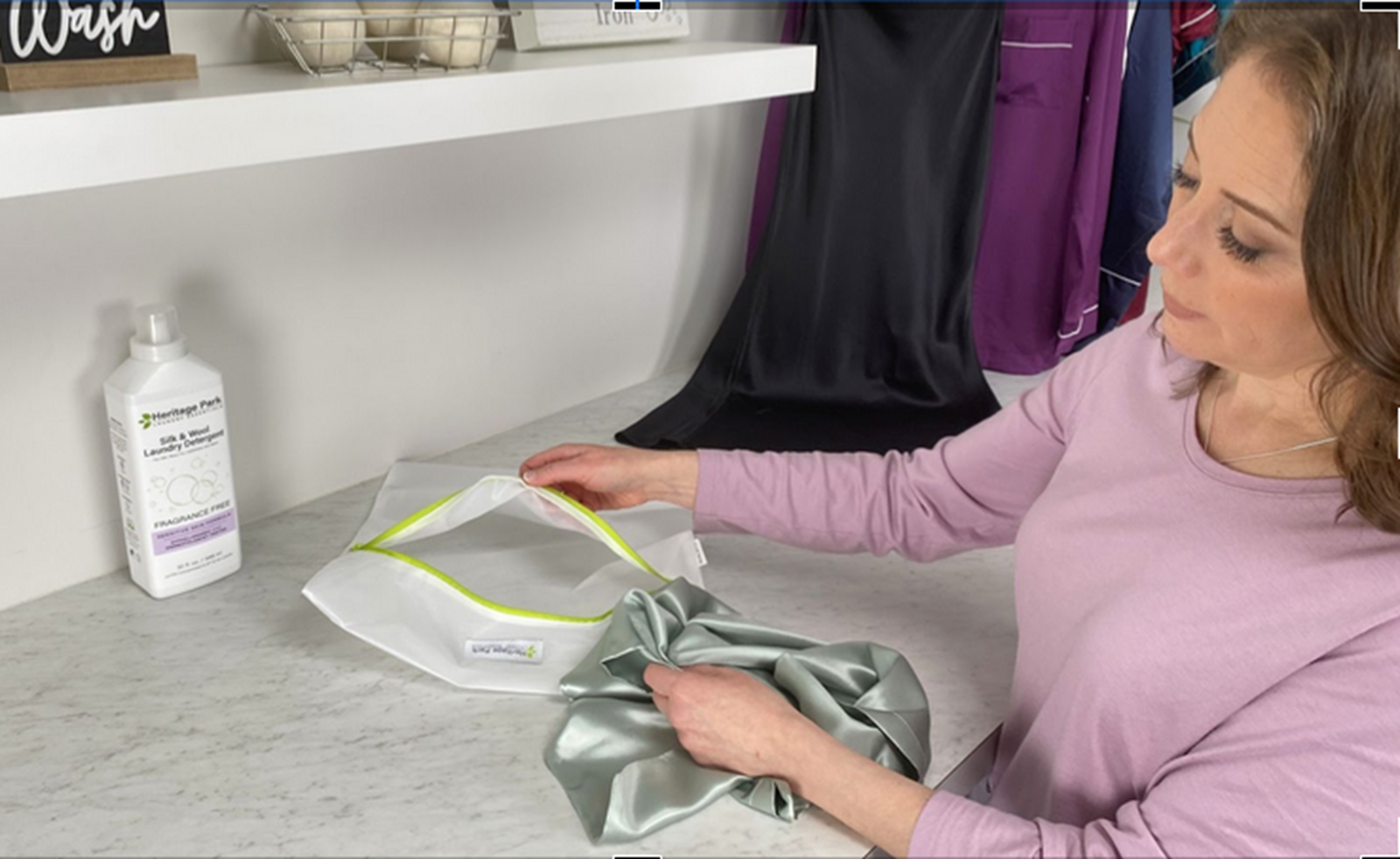Silk is much easier to care for than you might think. Don't be swayed by the misconception that silk is extremely delicate. Your mulberry silk bedding just needs a touch more attention. Your silk sheet set, accessories, robe and pillowcase can be laundered in a machine or by hand. If you opt for machine washing, be sure to follow the guidelines below to ensure your silk remains gorgeous for the long haul.
Click here for a guide on the Do's and Dont's of Caring for your Silk or view additional Care Instructions and FAQs
Alpine Loft Down Alternative Duvet Insert: Machine wash cold, dry on low heat until complete dry. Wool Dryer Balls Recommended.
Lily Duvet Insert: Dry Clean Only
Calla Lily Duvet Insert: For best results, dry clean
Natural Maize Duvet Insert: Dry Clean Only
Brushed Natural Mulberry Silk Blankets: Dry Clean Only
Head Scarves, Sleep Bonnets, Glam Bands, Sleep Masks, & Scrunchies
To remove a blood stain, place your robe under the faucet and run water through the reverse side to “force” the stain out. Cold water is quite effective at removing blood (do not use warm water or hot water, which will cause the blood to coagulate and become more difficult to remove).
For a sweat stain, use a mild solution of white vinegar and water and soak the robe prior to washing.
For tough stains that do not rinse out with these methods, it is okay to use a mild detergent made for fine fabric to pre-soak your robe. We recommend Heritage Park All-Purpose Detergent, which is a plant-based formula with a proprietary enzyme blend. Again, this should be done only on a limited basis for difficult stains, not for regular washing of your silk (although Heritage Park All-Purpose Detergent is perfect for regular washing of other fabrics like cotton, synthetics, and blends). Use a mild solution of lukewarm water in a sink or basin with a tablespoon or so detergent and soak your robe prior to washing (no longer than 30 minutes). You can also try a commercial stain remover, as long as it is marked safe for silk. In these cases, we always recommend testing on an inconspicuous area of the fabric.
Yes, you can!
If you are going to iron silk, follow these basic instructions:
